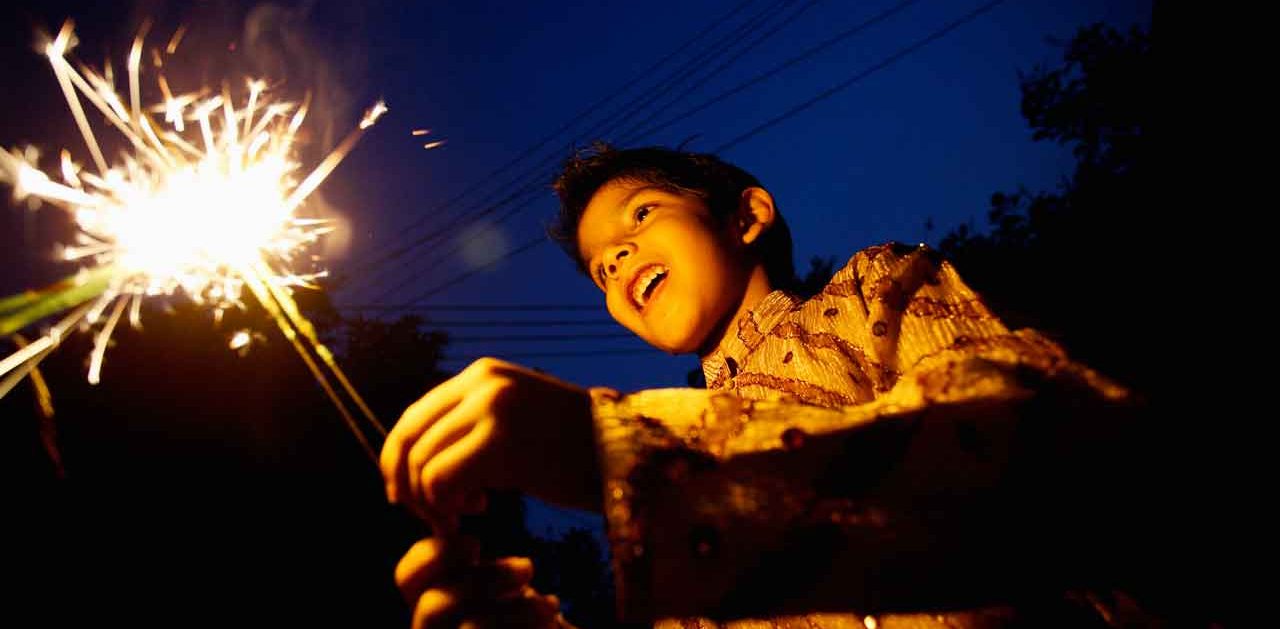Essential Tips for Fireworks Safety

Every year, about 74 percent of all fireworks-related injuries occur during the weeks surrounding July 4th. Here's how to avoid a serious injury each Independence Day.
Every July 4th, a dazzling explosion of color and light fills the sky. The biggest, brightest, and boldest firework displays cost millions of dollars and take a team of pyrotechnic experts to execute. Some Americans create their own downsized backyard shows, but, without the right safety techniques in place, homemade fireworks displays can end in tragedy.
About 74 percent of all fireworks-related injuries occur during the weeks surrounding July 4th, resulting in an average of 230 people needing hospital emergency department treatment, according to the Consumer Product Safety Commission. Most of these injuries involve burns to the extremities.
“The injuries that we see tend to occur on the hands and fingers primarily. However, they also occur on the face… and may even affect the eyes,” said Jeffrey Litt, DO, an assistant professor of surgery at the University of Missouri School of Medicine and medical director of University Hospital’s burn and wound program. “In addition to burns, these fireworks may also damage tissue and cause the loss of a limb.”
Fireworks don’t need to be big and powerful to hurt you.
“Even sparklers, which are often thought of as harmless enough for children to hold, burn at 1,200 degrees Fahrenheit and can cause significant injuries,” said Lorraine Carli, vice president of outreach and advocacy for the National Fire Protection Association. “Knowing the harm fireworks inflict each year, particularly on young people, we urge everyone to leave fireworks to the professionals, who are trained to safely put on spectacular displays. It is by far the safest way to enjoy them.”
If fireworks are legal where you live and you’re absolutely set on setting them off, follow these tips to prevent accidents.
YOU MIGHT ALSO LIKE: Our Summer Wellness section
Check your local laws
Know which fireworks are legal for personal use in your state. Fireworks with names like M-80, M100, blockbuster, and quarter sticks are typically off-limits.
Keep kids away
Never let children hold fireworks, especially ones that have been lit. That includes sparklers, which look innocent but can reach the same temperature as a blowtorch — hot enough to cause third-degree burns, the most serious type. Keep children a safe distance away as you light fireworks. Teens can help with the lighting, but only if they’re closely supervised by an adult. Don’t let kids anywhere near unexploded fireworks because they could still go off.
Read the labels
Carefully read the instructions for both lighting and disposing of fireworks.
Avoid alcohol
To set off fireworks safely, you need to be aware and alert. Save the drinking for after you launch them.
Keep fireworks out of your pocket — and hands
Never carry fireworks around in your pocket. Just rubbing against the fabric can create enough heat to make them go off. Also don’t light fireworks from your hand or near any other part of your body.
Light them carefully
Use fireworks only outdoors, in a big open area far from homes, cars, sheds, dry grass, trees, leaves, and other flammable substances. Light only one firework at a time, and never inside a container. Once it’s lit, get out of the way quickly. If a firework is a “dud” and doesn’t go off, don’t try to re-light it. Start with a new one.
Use protection
Wear plastic safety glasses to protect your eyes. Kids may want to wear earplugs if the loud noise scares them.
Keep water close by
Have a bucket of water, hose, and fire extinguisher nearby, in case of a fire.
When the show is over
Don’t toss unused fireworks directly in the trash. Soak them in water for a few hours before throwing them away.
YOU MIGHT ALSO LIKE: Avoid Overheating While Exercising This Summer
Updated:
September 20, 2022
Reviewed By:
Janet O’Dell, RN